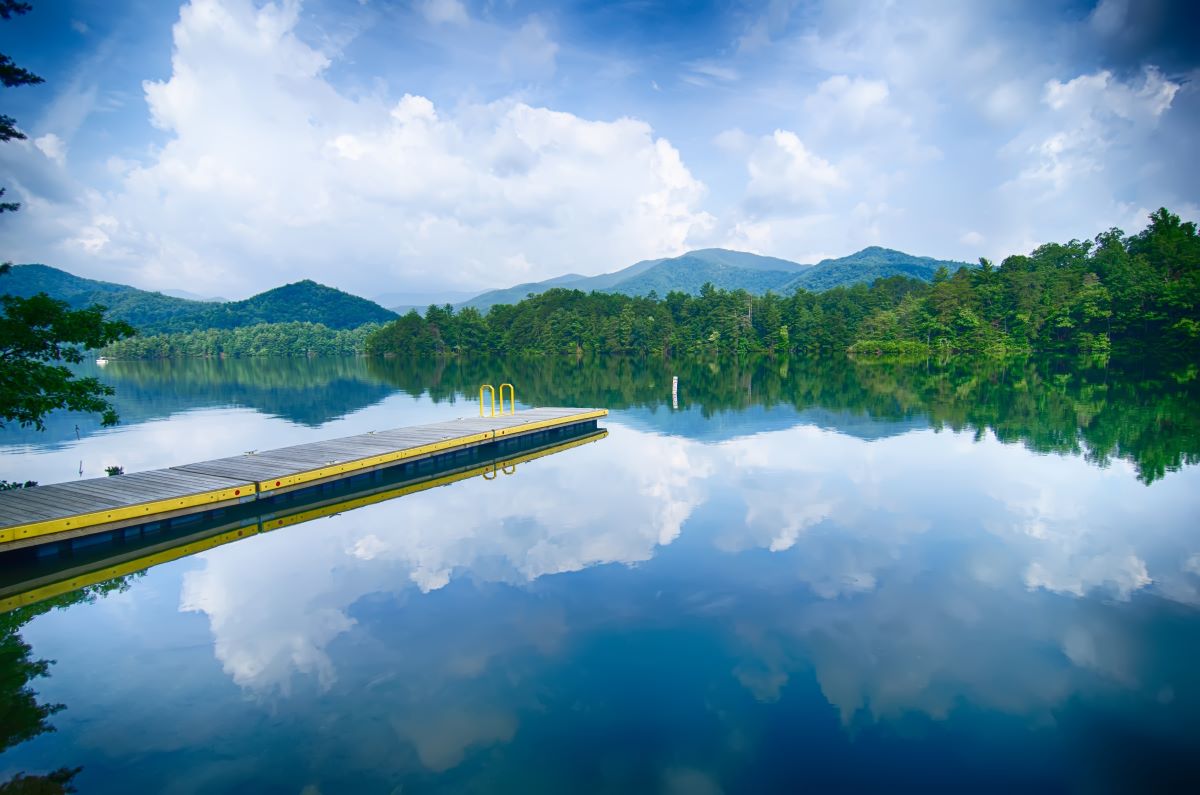Discover 35 of the Most Beautiful Lakes in the US
Nestled amid the breathtaking landscapes of the United States, a collection of stunning lakes beckons travelers and nature enthusiasts alike. From the rugged beauty of the Rocky Mountains to the serene charm of the Northeast to the Great Lakes in the Midwest, these lakes captivate visitors young and old.
With crystal-clear waters, verdant surroundings, and diverse wildlife, each of the most beautiful U.S. lakes tells its own fascinating story with natural wonder and tranquility as the setting. Embark on a journey of your own to discover the wonders of the nation’s most picturesque lakes.
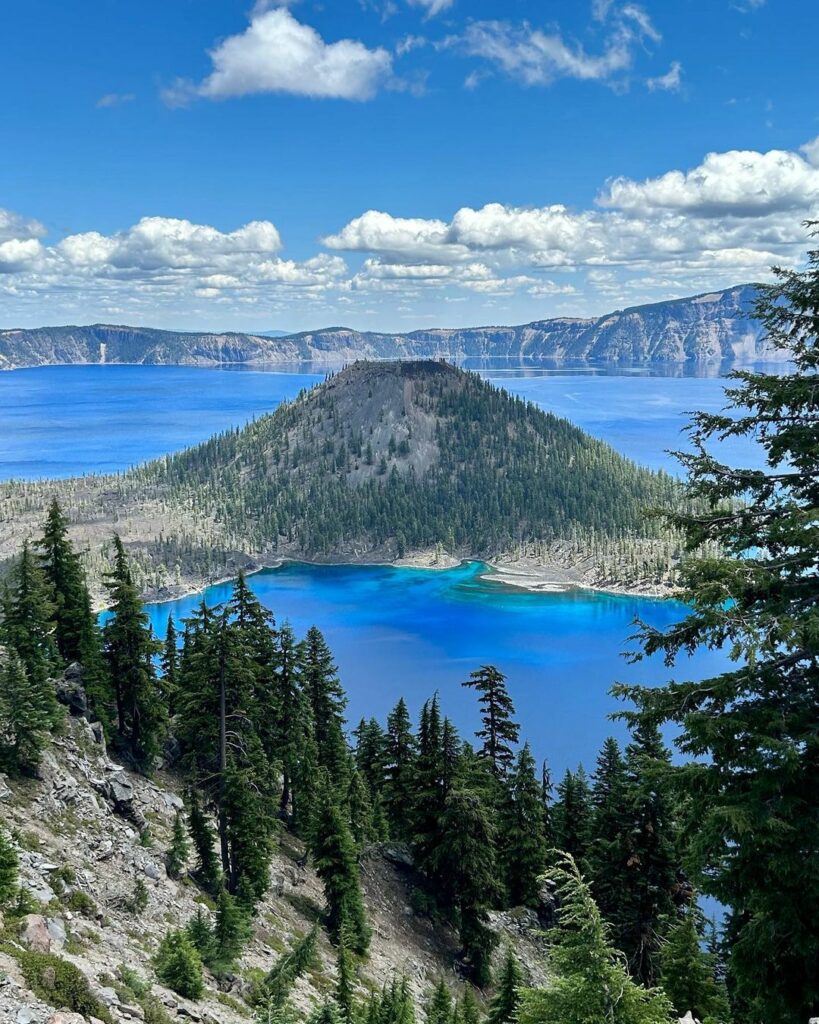
Crater Lake | Oregon
Crater Lake is renowned for its deep, vibrant blue color – a result of its depth and clarity. As the deepest lake in the U.S., it reflects the sky in a stunning way that seems almost surreal.
It’s set inside a caldera formed from a collapsed volcano, offering stunning views and exceptional hiking trails. Surrounded by cliffs almost 2,000 feet high and the pure, unspoiled nature of Crater Lake National Park, its isolation contributes to its breathtaking beauty and tranquility.
Fun Fact: The lake was formed by the collapse of the volcano Mount Mazama. This volcanic origin adds to its mystique, with the surrounding cliffs and the picturesque Phantom Ship island inside the lake.
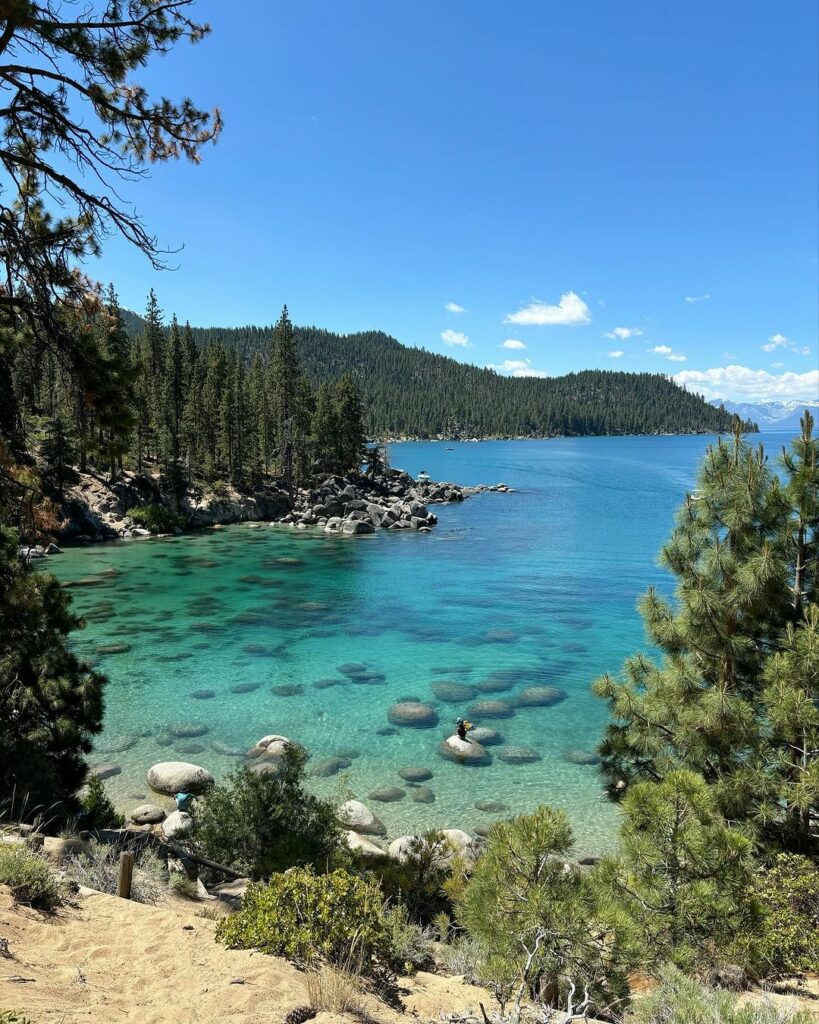
Lake Tahoe | California & Nevada
Lake Tahoe is famed for its clear blue waters and the beautiful mountains that surround it at the border of California and Nevada. Its depth reaches up to 1,645 feet, making it the second-deepest U.S. lake after Crater Lake and visibility often exceeds 70 feet.
The natural beauty of Lake Tahoe and its surroundings attracts millions of visitors annually. As a popular year-round destination, visitors enjoy boating and swimming in the summer and skiing at renowned resorts in the winter.
Fun Fact: Lake Tahoe is the largest freshwater lake in the Sierra Nevada. It’s also the largest alpine lake in North America and only the five Great Lakes are deeper.
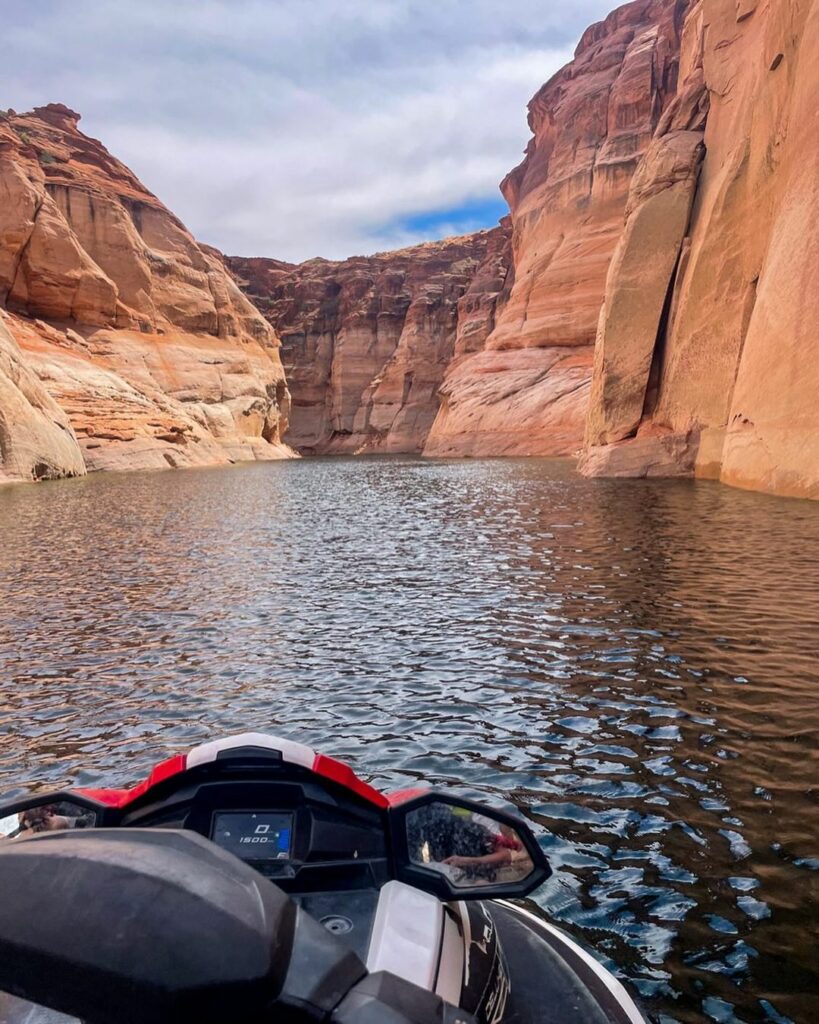
Lake Powell | Arizona & Utah
Nestled within the Glen Canyon National Recreation Area, Lake Powell offers an otherworldly experience with mesmerizing red rock landscapes and crystal-clear waters. It’s the second-biggest human-made reservoir and its shoreline stretches over 1,900 miles.
The lake is a haven for outdoor enthusiasts, particularly houseboaters, who can rent boats and spend extended time exploring the lake’s wonders. Its scenic nature also attracts swimmers, and photographers seeking to capture its unique beauty.
Fun Fact: Even though Lake Powell started filling in 1963 it didn’t reach full pool until 1980.
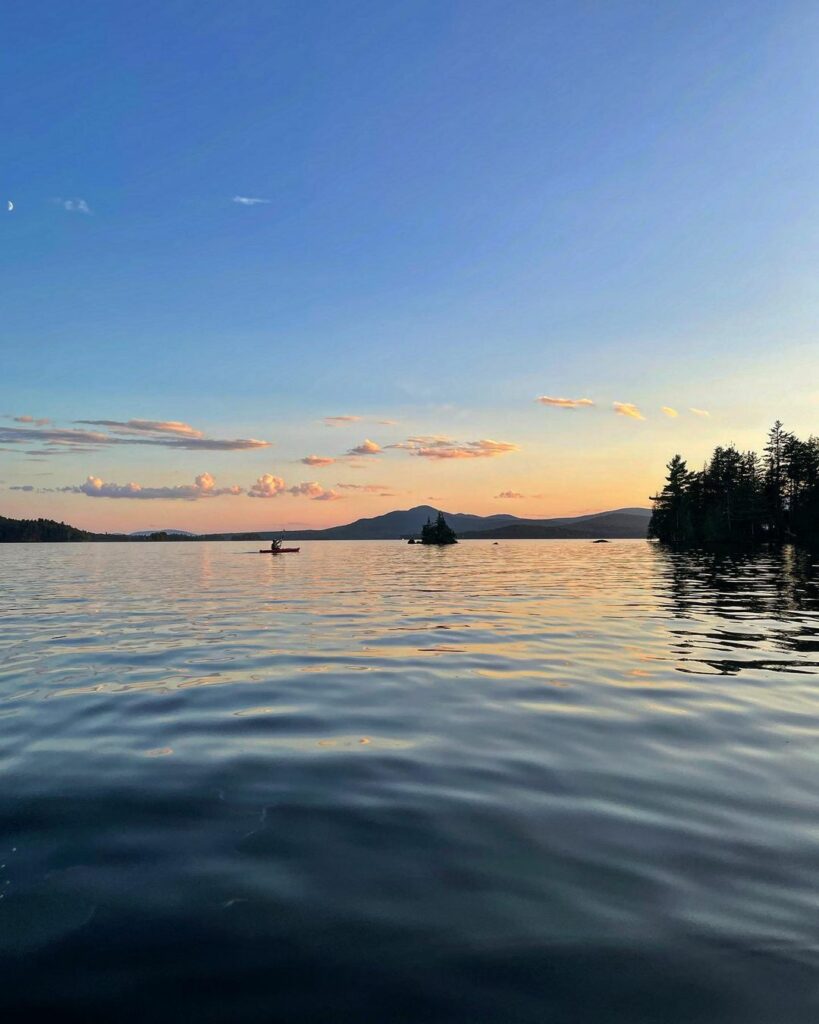
Moosehead Lake | Maine
Maine’s largest lake is a peaceful retreat in the north-central part of the Pine Tree State. Covering about 120 miles, Moosehead Lake is renowned for its beauty, being surrounded by the Maine Highlands.
From its variety of wildlife including moose and bald eagles to its small lakefront communities to its opportunities for year-round recreation, Moosehead Lake offers something for every resident and visitor.
Fun Fact: Moosehead Lake is the largest lake east of the Mississippi River contained within a single state and is also home to dozens of islands.
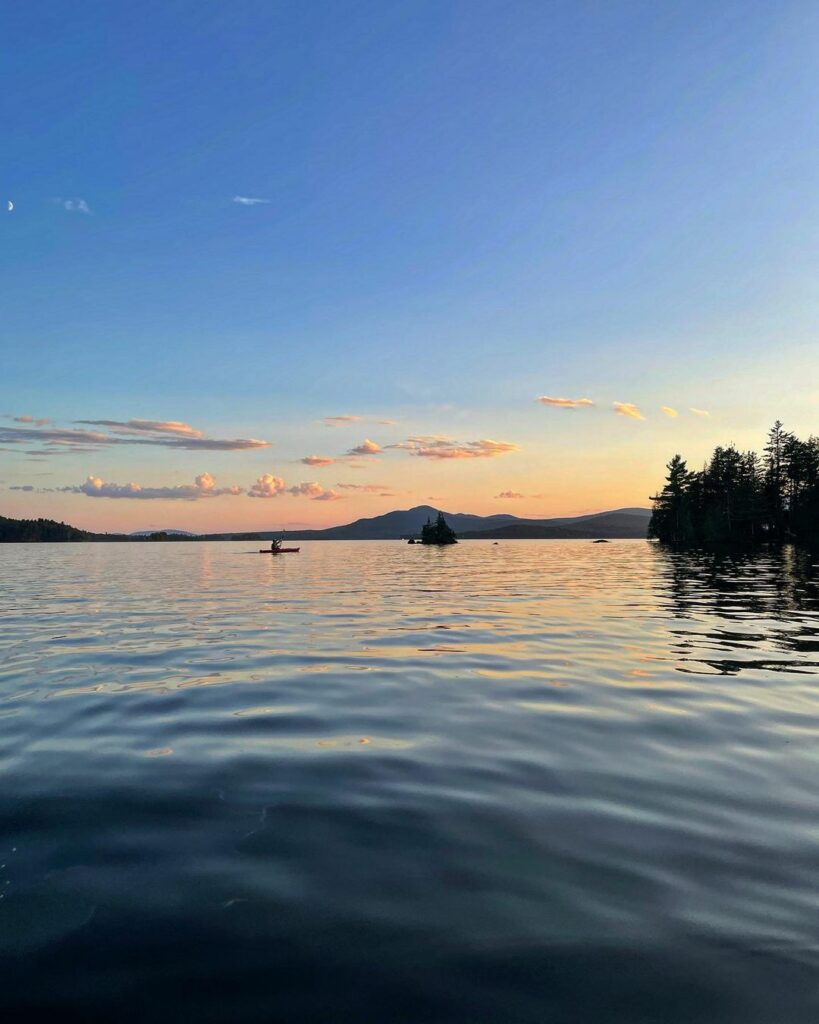
Glacier National Park Lakes | Montana
Thanks to several ice ages, Glacier National Park is home to hundreds of lakes — more than 700. These glacier-fed lakes boast vibrant blue waters set against a backdrop of mountain peaks.
Lake McDonald is the biggest lake in the park, running for about 10 miles and more than 450 feet deep, and is known for its clear waters and mountain scenery. St. Mary Lake runs about nine miles in length and offers views of towering mountains, including the peaks of the Garden Wall.
Fun Fact: One hundred thirty-one of the park’s lakes are named, including Two Medicine Lake, Hidden Lake, and Avalanche Lake.
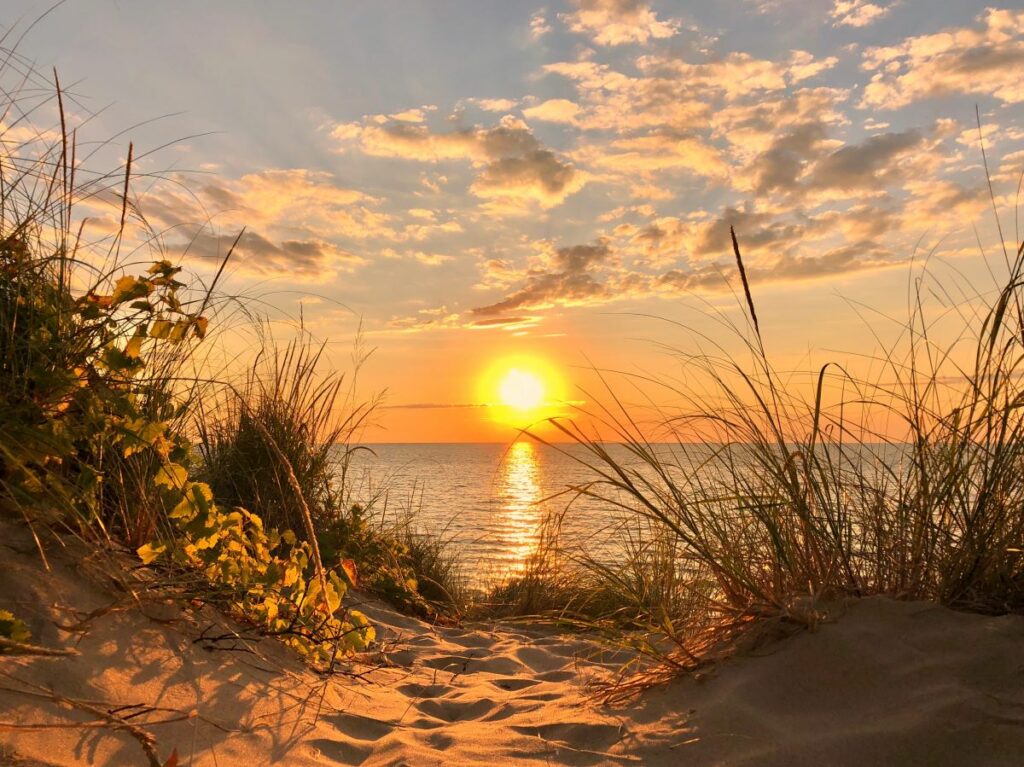
Lake Michigan | Great Lakes
Famous for its expansive sandy shores and clear waters, Lake Michigan is the third-biggest of the Midwest’s Great Lakes with more than 1,600 miles of shoreline across four states.
Residents and visitors can enjoy everything from vibrant cityscapes in Chicago to beautiful views and historic lighthouses to quiet, sandy beach retreats in Northern Michigan cities like Traverse City and Ludington and Michigan’s Upper Peninsula.
Fun Fact: Lake Michigan is the only Great Lake located entirely within the United States.
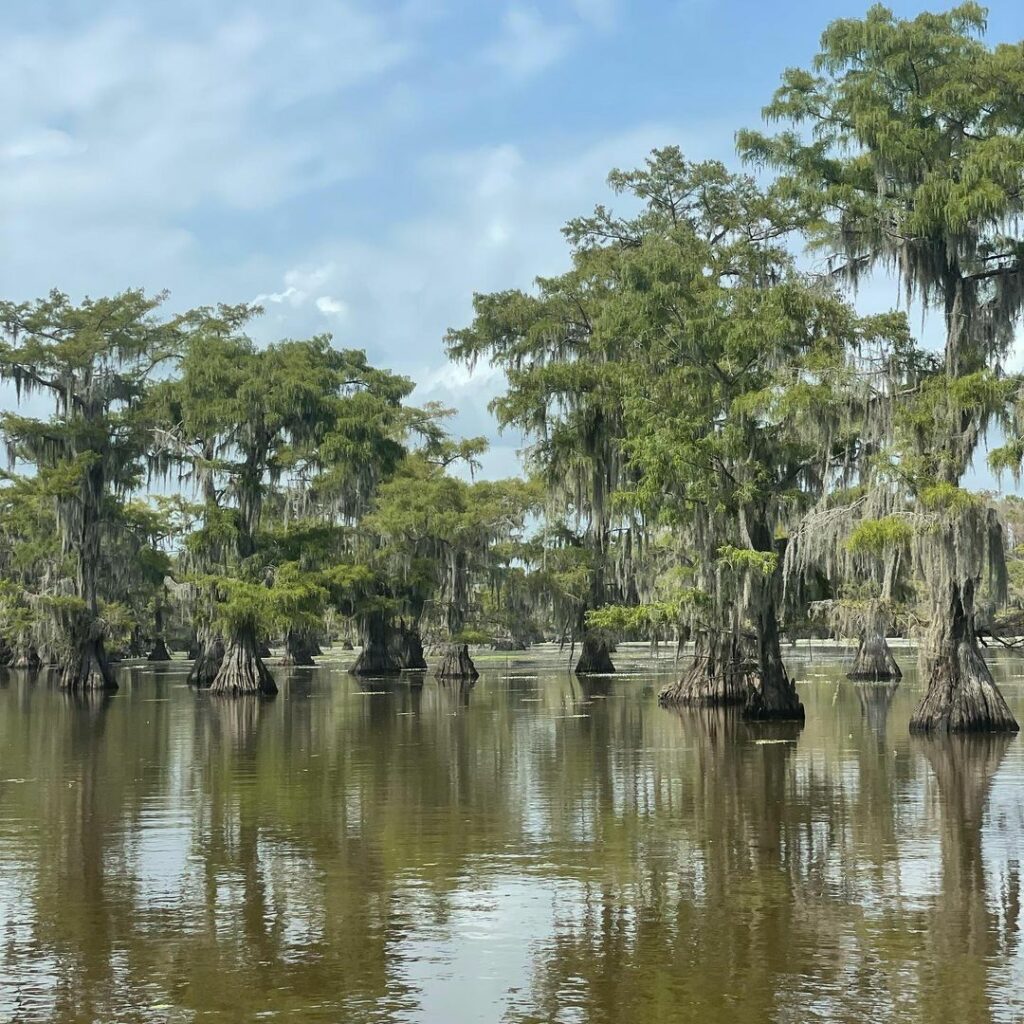
Caddo Lake | Texas & Louisiana
With its sprawling maze of bayous and wetlands and famous cypress trees draped in Spanish moss, Caddo Lake feels more like a living fairy tale than a lake. It’s Texas’ biggest freshwater lake and the second biggest freshwater lake in the South.
Caddo Lake is a natural lake formed by a gigantic log jam, known as the “Great Raft,” which blocked the flow of the Red River. The lake was further expanded in the early 20th century and is a popular spot for kayaking and fishing.
Fun Fact: Caddo Lake gets its name from the Caddoan people and a popular legend says that failure to obey the Great Spirit caused an earthquake, which created the lake.
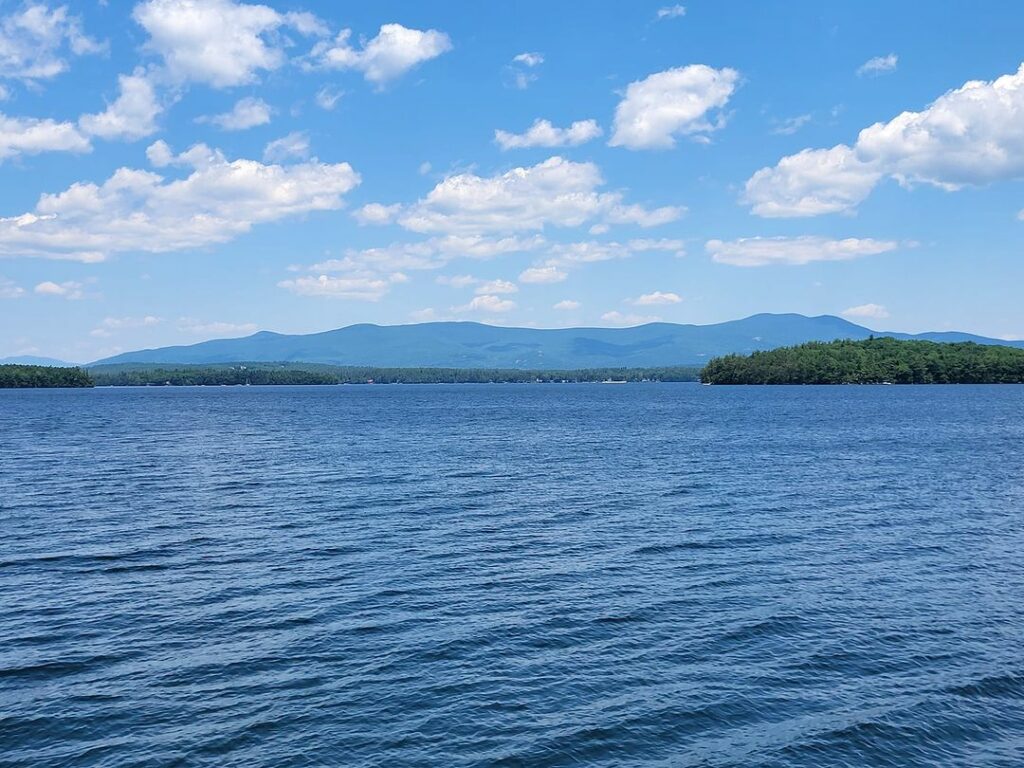
Lake Winnipesaukee | New Hampshire
Nestled in central New Hampshire, this scenic glacial lake spans 72 miles, is more than 200 feet deep, and is surrounded by quaint lakefront towns, rolling hills, and lush forests.
Lake Winnipesaukee offers stunning vistas and is also dotted with hundreds of scenic islands, some of which are home to state parks and beautiful conservation areas. In addition to boating, fishing, and skiing, visitors can take cruises and boat tours to learn more about the lake.
Fun Fact: The name Winnipesaukee is an Abenaki name that is said to mean the beautiful water in a high place or smile of the Great Spirit.
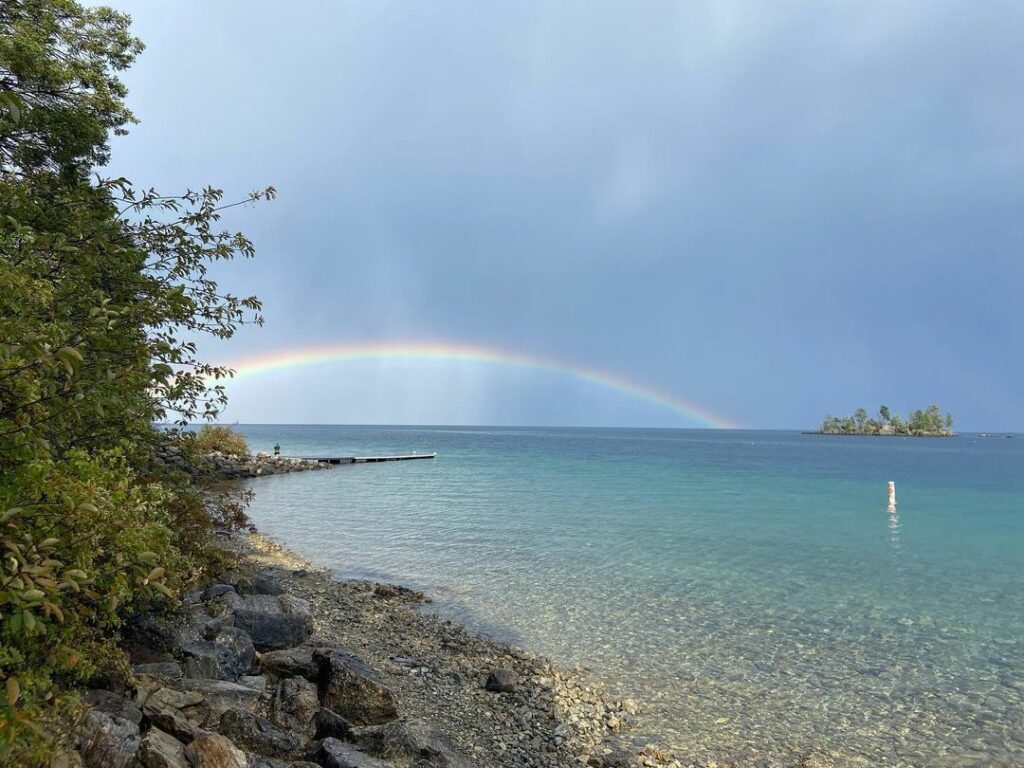
Flathead Lake | Montana
As the largest natural freshwater lake west of the Mississippi River, Flathead Lake is known for its crystal-clear waters within the rugged Montana landscape. Visibility on the lake often exceeds 30 feet due to the absence of pollutants and low nutrient levels.
The lake sits in a glacial basin carved by ancient ice sheets during the last Ice Age. It is flanked by the rugged peaks of the Mission Mountains to the east and the Salish Mountains to the west. Flathead Lake covers about 200 miles and reaches depths of more than 350 feet.
Fun Fact: Flathead Lake is one of the biggest natural lakes in the world and also one of the cleanest.
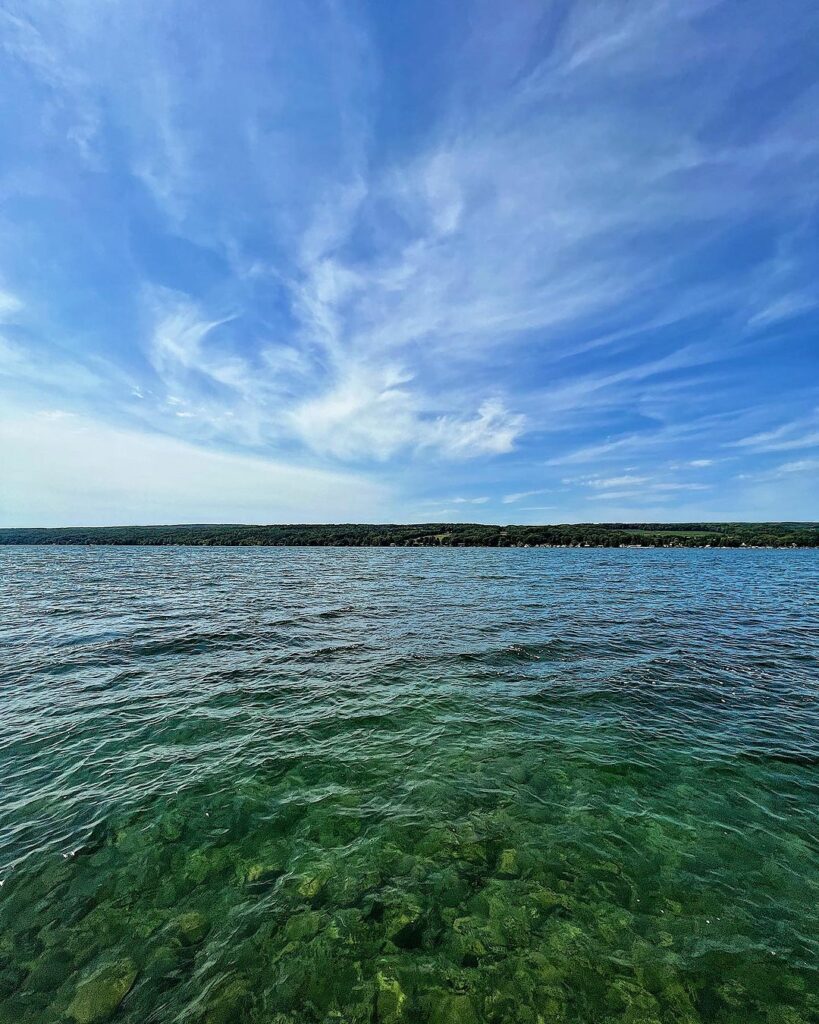
Finger Lakes | New York
These 11 lakes in central New York are collectively called the Finger Lakes because of their long, narrow, finger-like shape, but each lake has its own character.
While the lakes are a popular destination for fall foliage, camping, fishing, and boating, it’s renowned for its wine production, thanks to the fertile lands surrounding the waters. Visitors can trek the Seneca Lake Wine Trail and the Cayuga Lake Wine Trail to explore the area’s many wineries.
Fun Fact: The Finger Lakes are a geological anomaly, created by the grinding of receding glaciers during the last ice age. Those gravel pockets dammed streams and caused the pockets to become the famous Finger Lakes.
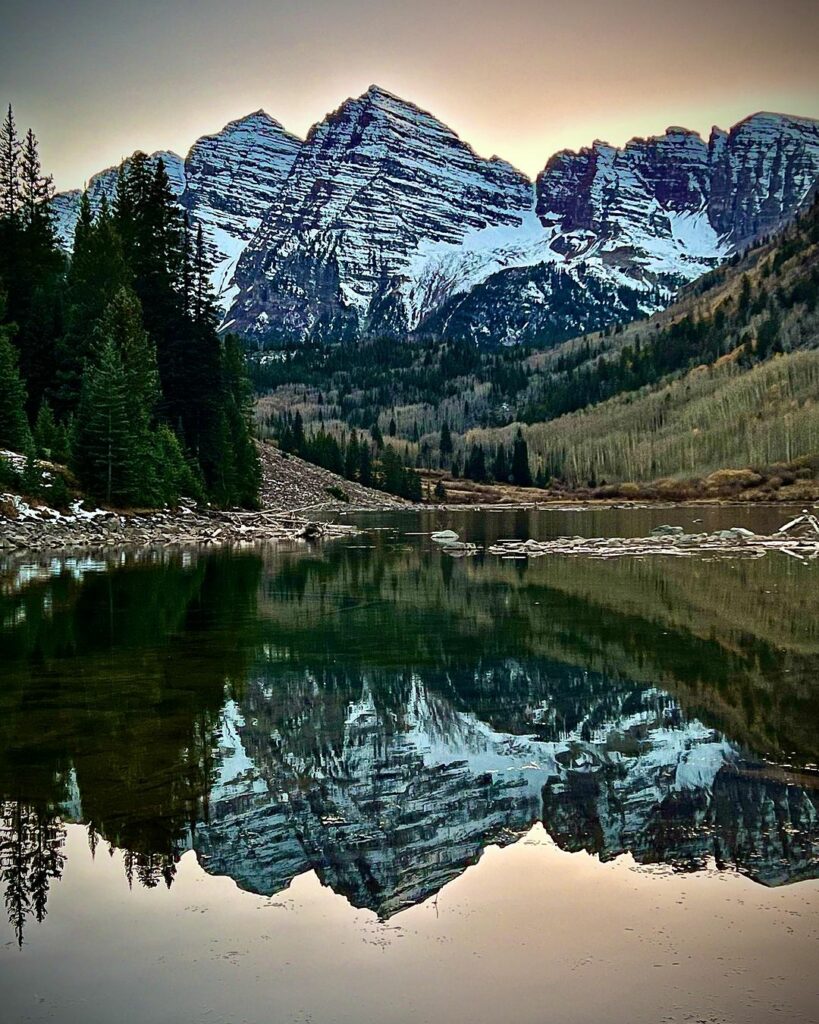
Mirror Lake | Utah
Nestled in the Uinta Mountains, Mirror Lake is small but is so named for its calming and reflective waters, which usually reflect the surrounding lakes and mountains for indescribable views.
Outdoor enthusiasts looking for an escape can enjoy a serene spot for fishing, hiking, and camping, especially under a starlit sky. This mountain gem offers year-round recreation opportunities and a peaceful escape from the hustle and bustle of everyday life.
Fun Fact: Avid fishermen love trout fishing in Mirror Lake, casting a line for brook trout and rainbow trout.
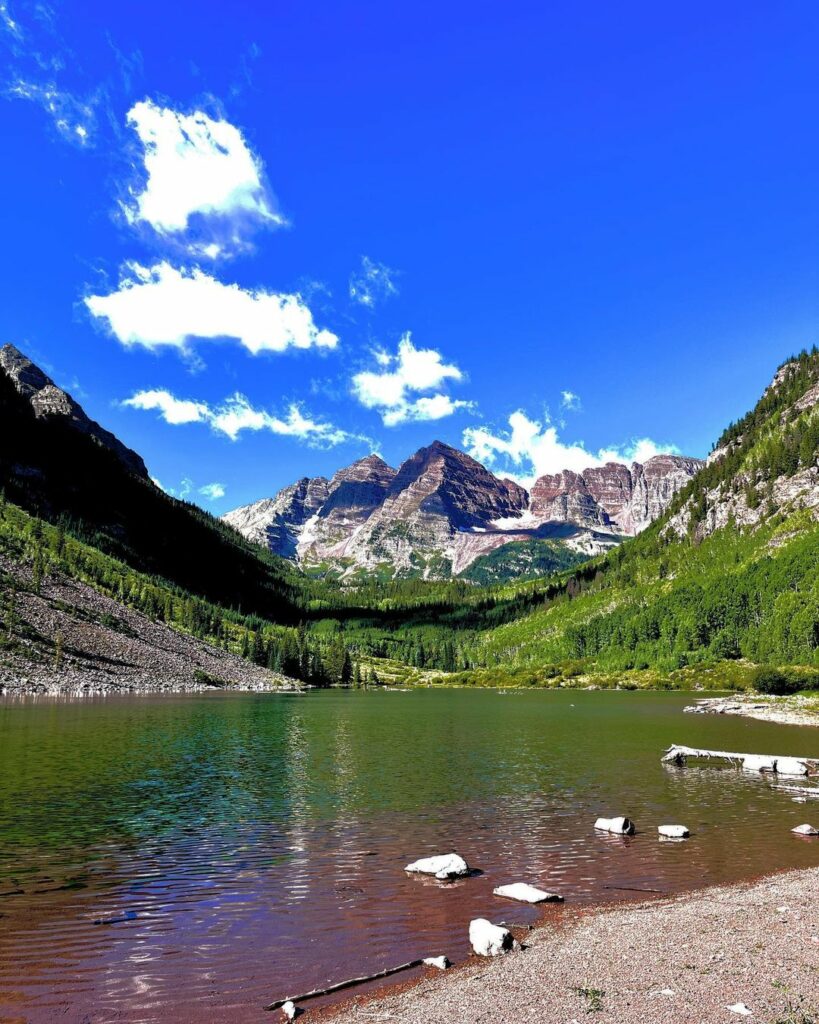
Maroon Lake | Colorado
Sitting at a towering elevation of nearly 10,000 feet in central Colorado, Maroon Lake is surrounded by the iconic Maroon Bells. The Bells, two massive 14,000-foot peaks, are a popular spot for photographers — especially in the fall.
Its magnificence makes the lake a popular destination for all outdoor lovers. The scenic Maroon Lake Trail, winds around the lake, treating trekkers to stunning views of wildlife, the Bells, and the surrounding mountains.
Fun Fact: Maroon Lake was formed by debris and mud from the Sievers Mountain.
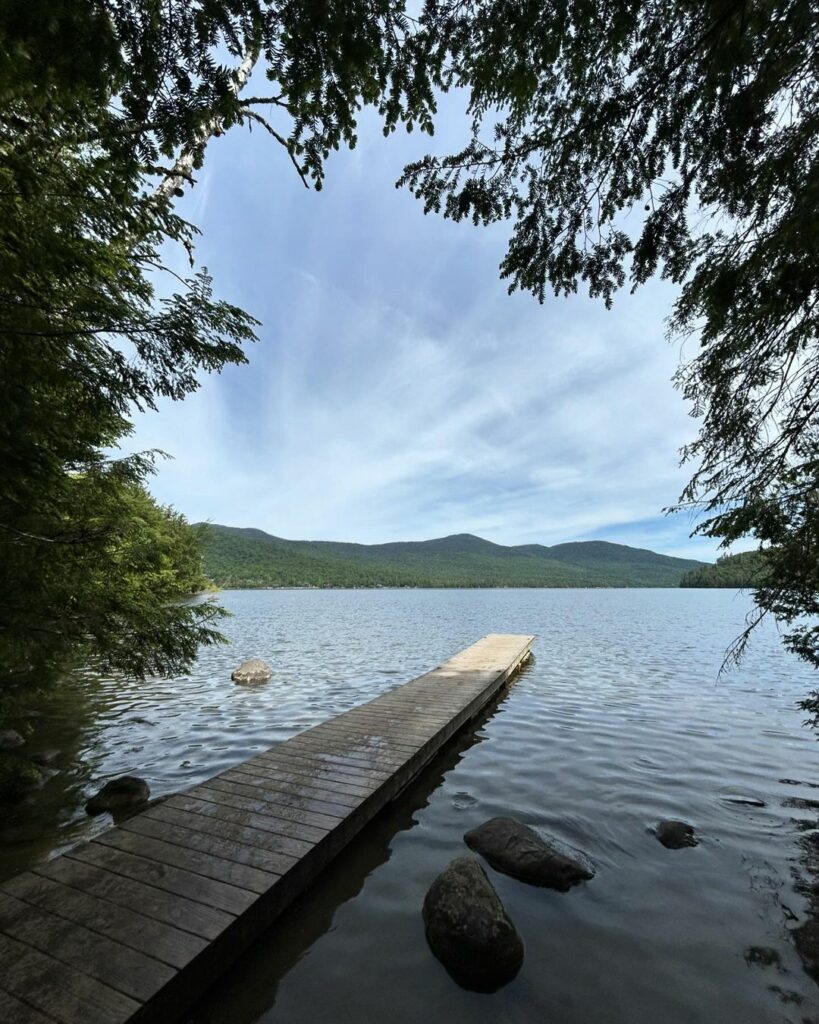
Lake Placid | New York
Situated in the Adirondack Mountains in Northeastern New York, Lake Placid sits over 1,800 feet above sea level with a maximum depth of around 50 feet.
The village of Lake Placid is famously known as the site of the 1980 Winter Olympics, where the Miracle on Ice occurred. The lake itself is a year-round destination, offering panoramic views of Whiteface Mountain, excellent fishing, beach access, boating, and kayaking.
Fun Fact: Lake Placid is the only U.S. location to host two Winter Olympics — 1932 and 1980.
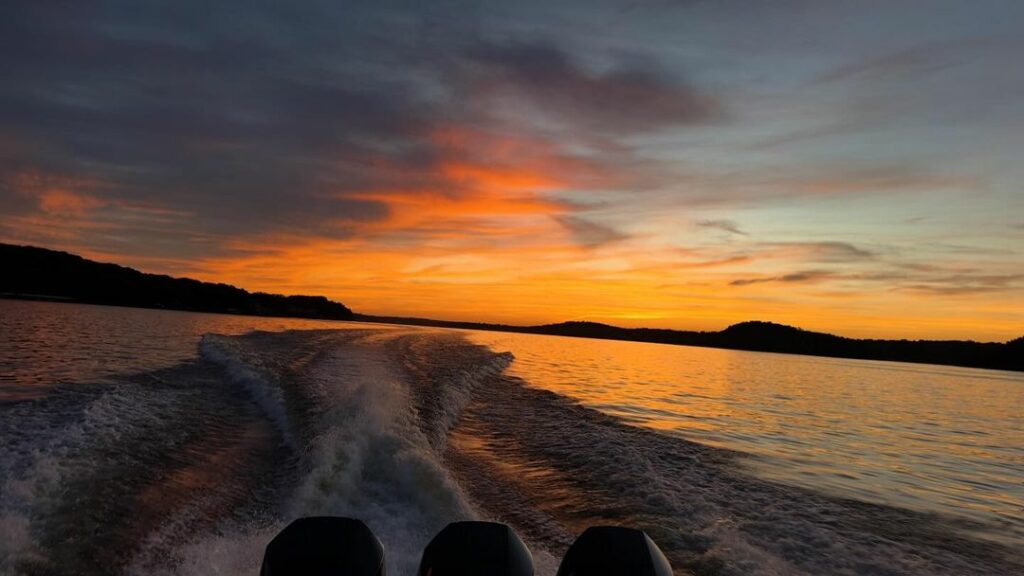
Lake of the Ozarks | Missouri
With more than 1,100 miles of shoreline, the Lake of the Ozarks in central Missouri is a popular destination for vacationers, photographers, fishermen, and travelers, who love its natural beauty.
Created by the construction of the Bagnell Dam on the Osage River, Lake of the Ozarks is one of the nation’s largest man-made lakes. Its location allows travelers to explore the wonders of Lake of the Ozarks State Park, including the popular Ozark Caverns on guided tours.
Fun Fact: Because of its shape, Lake of the Ozarks is sometimes known as “The Magic Dragon,” and looks like a slithering snake.

Lake Superior | Great Lakes
As the largest and deepest of the Great Lakes, Lake Superior is known for its rugged beauty, lighthouses, and shipwrecks. Adventurers can explore iconic natural spots, beaches, and more across three states.
Lake Superior reaches an average depth of around 480 feet and is known for its cold, clear waters. The lake is dotted with numerous picturesque islands, including Isle Royale in Michigan and the Apostle Islands in Wisconsin.
Fun Fact: Lake Superior alone holds 10% of the world’s fresh water and hardly ever freezes entirely.
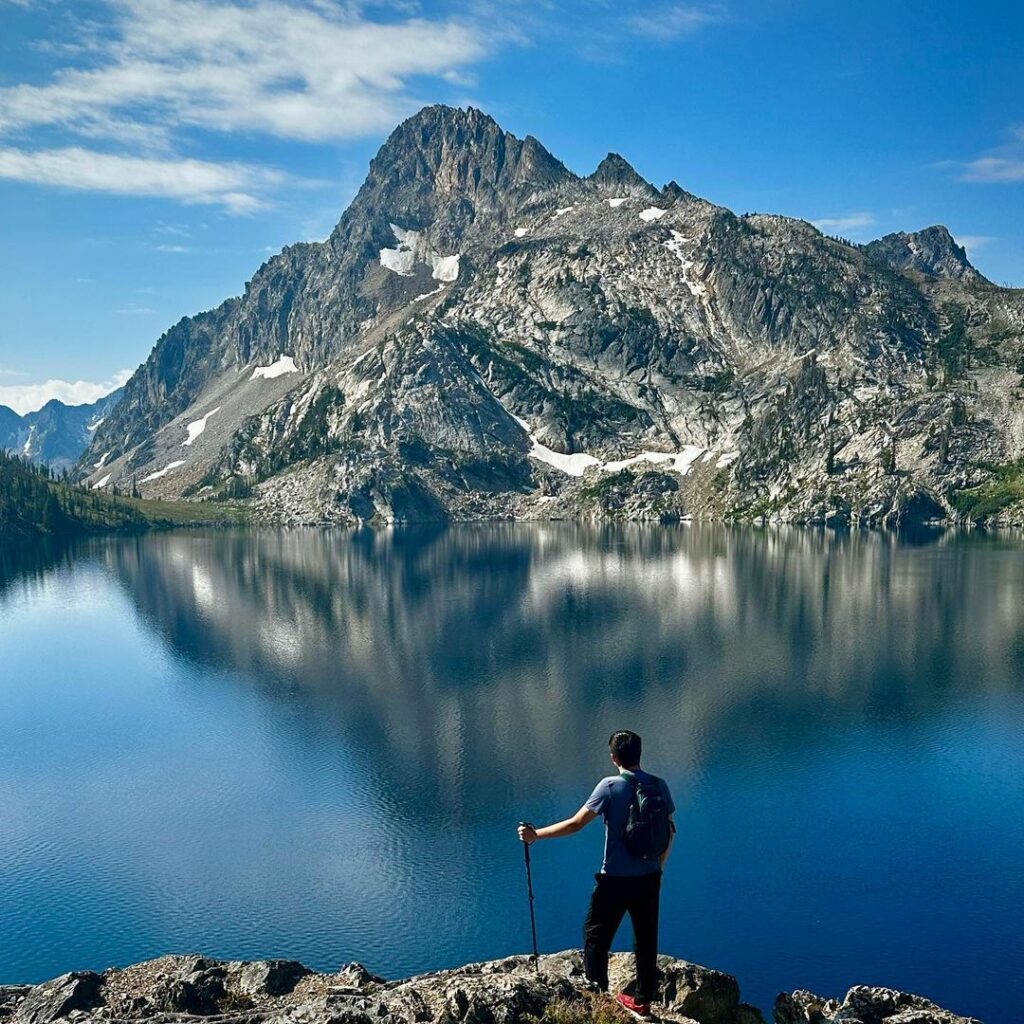
Beaver Lake | Arkansas
Nestled in the heart of the Ozarks, Beaver Lake in Northwest Arkansas is undeniably scenic. It’s famous for its limestone bluffs, natural caves, clear waters, and tree varieties, creating an outdoor wonderland.
Beaver Lake is a man-made reservoir created in the 1960s by the construction of Beaver Dam on the White River as part of a flood control and hydroelectric power project by the U.S. Army Corps of Engineers. It remains a popular destination for a plethora of outdoor activities.
Fun Fact: Beaver Lake is known nationally as a bass fishing hotspot.
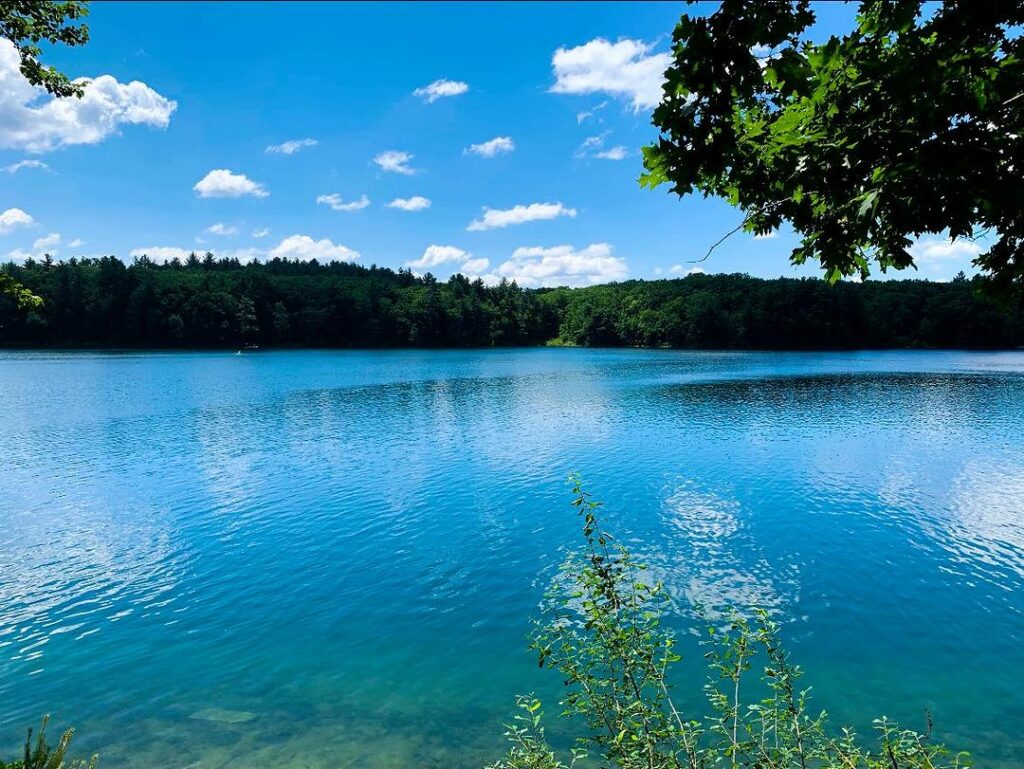
Walden Pond | Massachusetts
Made famous by Henry David Thoreau, Walden Pond sits about 20 miles west of Boston in the Walden Pond State Reservation, making it a popular day trip destination. While the lake is small — covering about 60 acres — it is a place of natural beauty and tranquility.
While Thoreau famously documented his experiences in Walden, locals and visitors can come to this historic spot for a peaceful retreat and excellent conditions for swimming, hiking, kayaking, and interpretive exhibits.
Fun Fact: Walden Pond is an example of a kettle hole and was formed by retreating glaciers thousands of years ago.
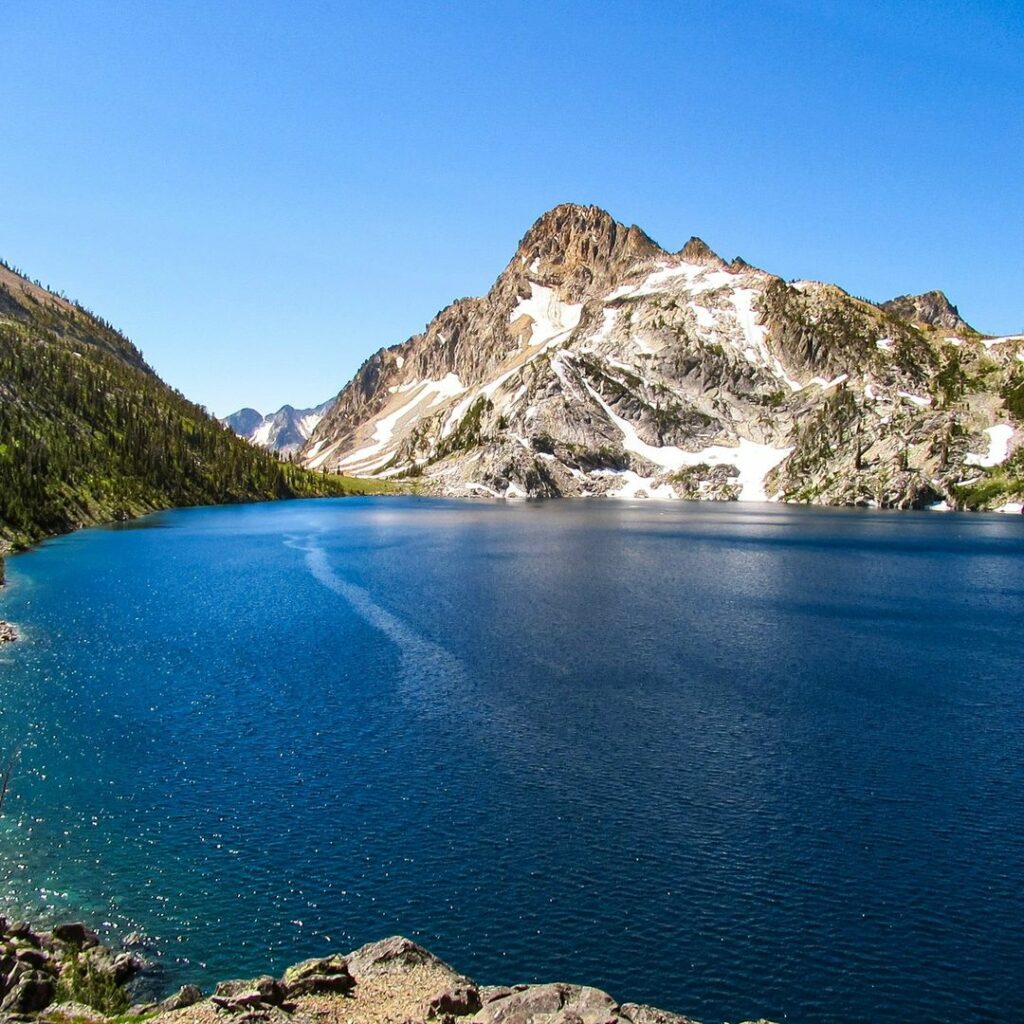
Sawtooth Lake | Idaho
Renowned for its stunning alpine scenery in the Sawtooth Wilderness, Sawtooth Lake is the ultimate rewarding destination for travelers looking for mountain adventures. Surrounded by granite cliffs and mountain peaks, Sawtooth Lake offers a chance to enjoy crystal-clear waters, scenic hikes, and perhaps even a glimpse of deer and elk.
Die-hard outdoors people can soak up the beauty of their surroundings on a backcountry camping adventure, which allows for a more intimate enjoyment of the central Idaho wilderness.
Fun Fact: The Sawtooth Range in Idaho is home to nearly 400 lakes.
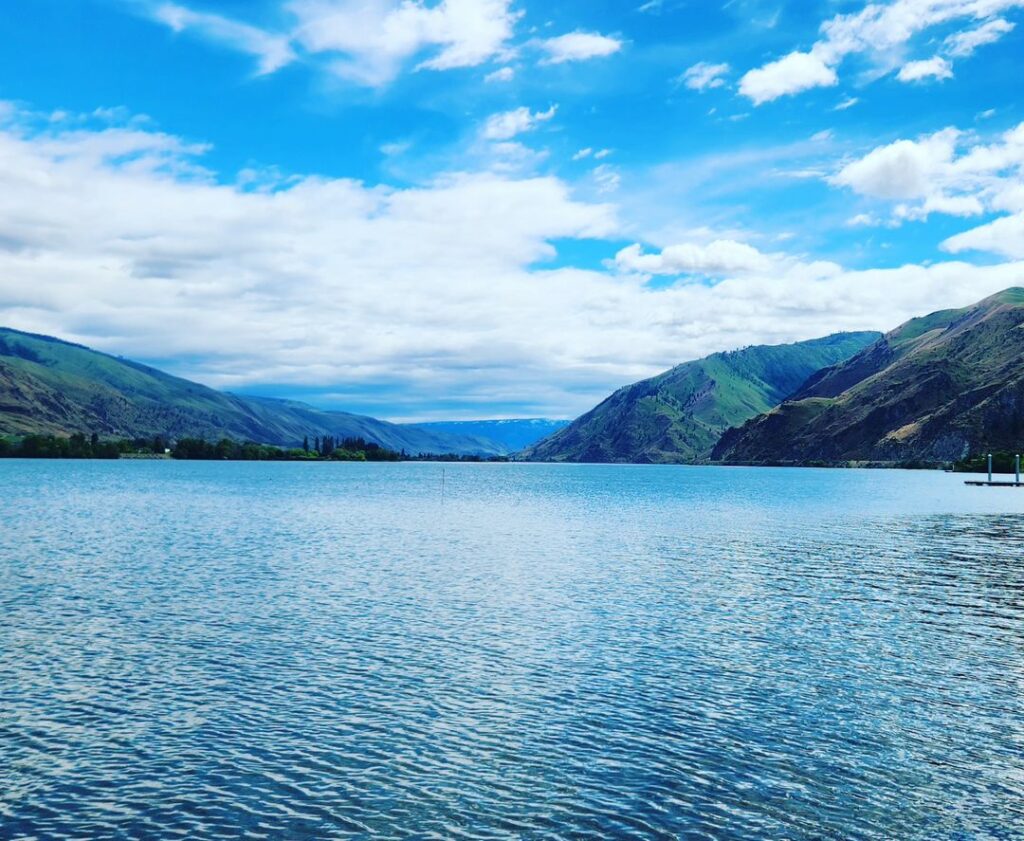
Lake Chelan | Washington
Tucked into Washington’s North Cascades, this freshwater lake stretches for about 50 miles and reaches depths of nearly 1,500 feet as it’s fed by snowmelt from nearby mountains.
The lake is flanked by steep, forested slopes, rocky cliffs, and snow-capped peaks, creating a breathtaking backdrop for outdoor adventures and exploration. The south end of the lake is wine country, allowing visitors to explore award-winning wineries.
Fun Fact: With a maximum depth of 1,486 feet, Lake Chelan is the third deepest Lake in the United States.
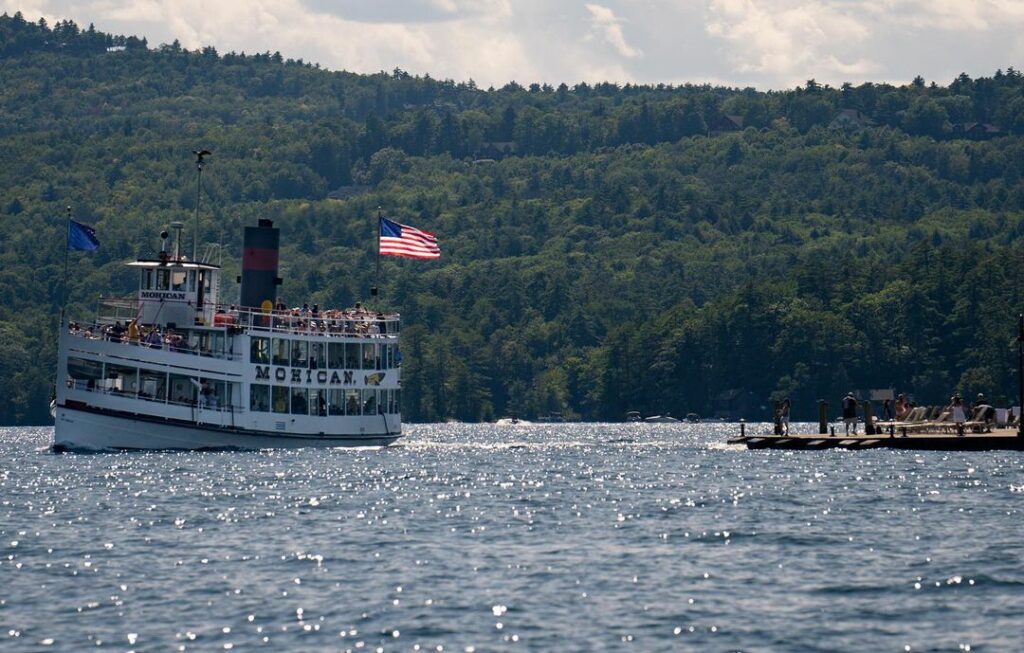
Lake George | New York
Situated in upstate New York, the “Queen of American Lakes,” offers 32 miles of crystal-clear water surrounded by mountainous terrain, historic colonial-era forts, and recreational activities.
Lake George is also dotted with numerous islands, which are perfect for exploring. Dome Island is the largest and most famous of those islands, with its dome-shaped profile rising from the lake’s waters. Long Island and Diamond Island are among other local popular island destinations.
Fun Fact: Lake George stretches up to 2.5 miles wide and is considered to be among the clearest and cleanest of the world’s largest lakes.
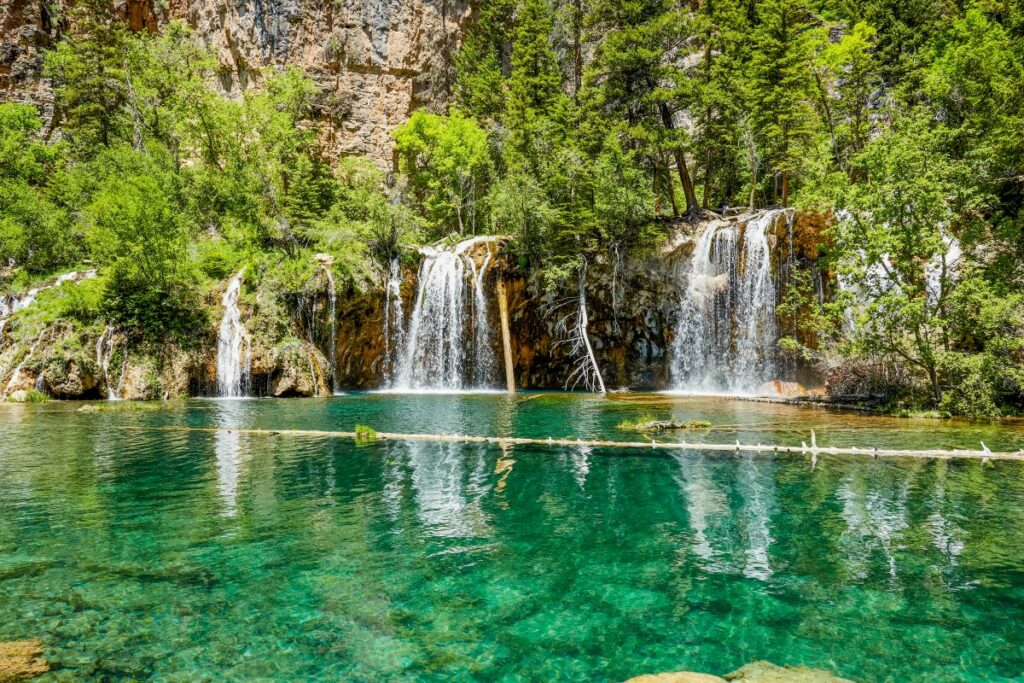
Lake Winnibigoshish | Minnesota
Locally known as “Lake Winnie,” this lake in Northcentral Minnesota is nestled within the Chippewa National Forest and is one of the biggest in the Land of 10,000 Lakes.
Despite its irregular shape, Lake Winnie is renowned for its fishing, particularly for walleye, making it a favorite among anglers. It also holds historical significance as an important pre-colonial waterway and provides ample opportunities for outdoor recreation.
Fun Fact: With a size of more than 67,000 acres, Lake Winnie is the fifth biggest lake in Minnesota.
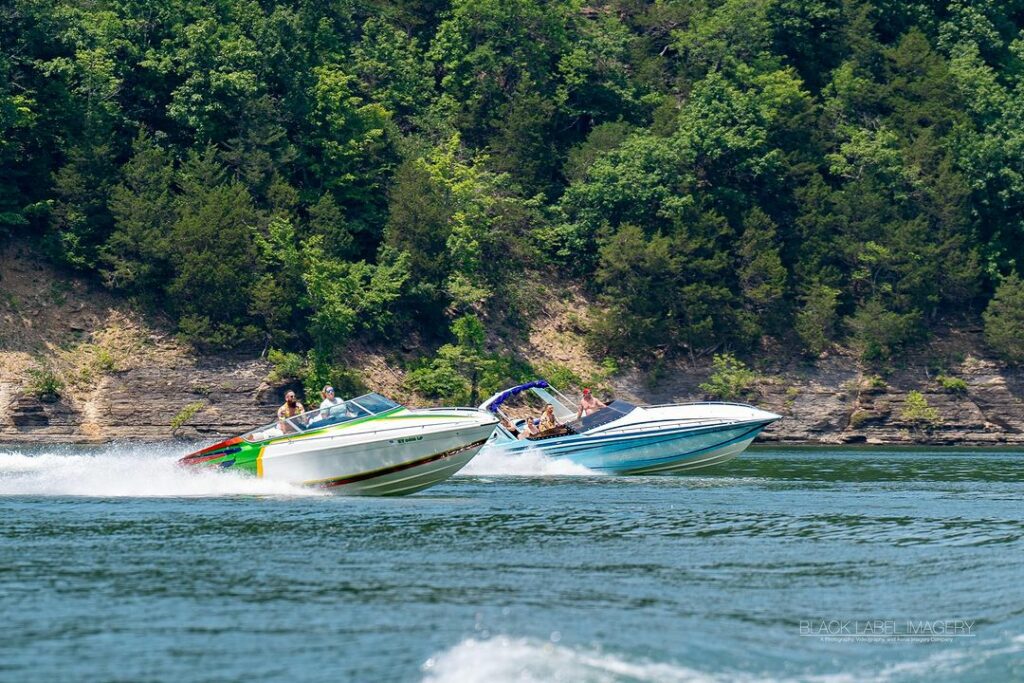
Lake Cumberland | Kentucky
Boasting more than 1,200 miles of shoreline, Lake Cumberland is one of the country’s biggest man-made lakes and spans over 65,000 acres. The lake is famous as a houseboat hub with many companies offering options for travelers to enjoy their visit uniquely.
As a cherished gem in a scenic, remote location, Lake Cumberland is renowned for its stunning natural beauty, with its clear blue waters, forested hillsides, and rocky cliffs attracting visitors year-round.
Fun Fact: The lake was originally known as the Wolf Creek Reservoir and didn’t get the name Lake Cumberland until the 1950s.
Big Bear Lake | California
Located in the San Bernardino Mountains, Big Bear Lake’s amazing alpine scenery makes it a year-round destination for outdoor activities. At an elevation of more than 6,700 feet, the surrounding scenery makes it the perfect outdoor wonderland.
Residents and visitors alike can enjoy the clear waters and mountain backdrops as they enjoy boating, paddleboarding, fishing, or hiking in the surrounding landscape — the perfect getaway from bigger cities like Los Angeles.
Fun Fact: Big Bear Lake is almost entirely man-made and played a role in the California Gold Rush.
Devils Lake | North Dakota
Located in western North Dakota, Devils Lake is the state’s largest natural lake and is characterized by its flat terrain and shallow depth — the average depth is around 20 feet.
The lake has no natural outlet and is fed by creeks, streams, rainfall, and snowmelt. This causes fluctuations in the lake’s water levels and shoreline. Nonetheless, it remains a popular site for bird watching, hunting, and other outdoor activities.
Fun Fact: The lake reached its lowest recorded level in 1940 with an elevation of just 1,401 feet.

Hanging Lake | Colorado
High up in the Glenwood Canyon Mountains, Hanging Lake is a must-see for its turquoise waters, waterfalls, and fragile ecosystem. The lake is fed by natural springs and waterfalls, creating a perfectly pristine setting.
Hanging Lake can be accessed via a 1.2-mile hike that climbs about 1,000 feet. The hike is moderately strenuous but rewards hikers with incredible views of the lake and the surrounding area.
Fun Fact: Hanging Lake is a designated National Natural Landmark and is protected as part of the White River National Forest.
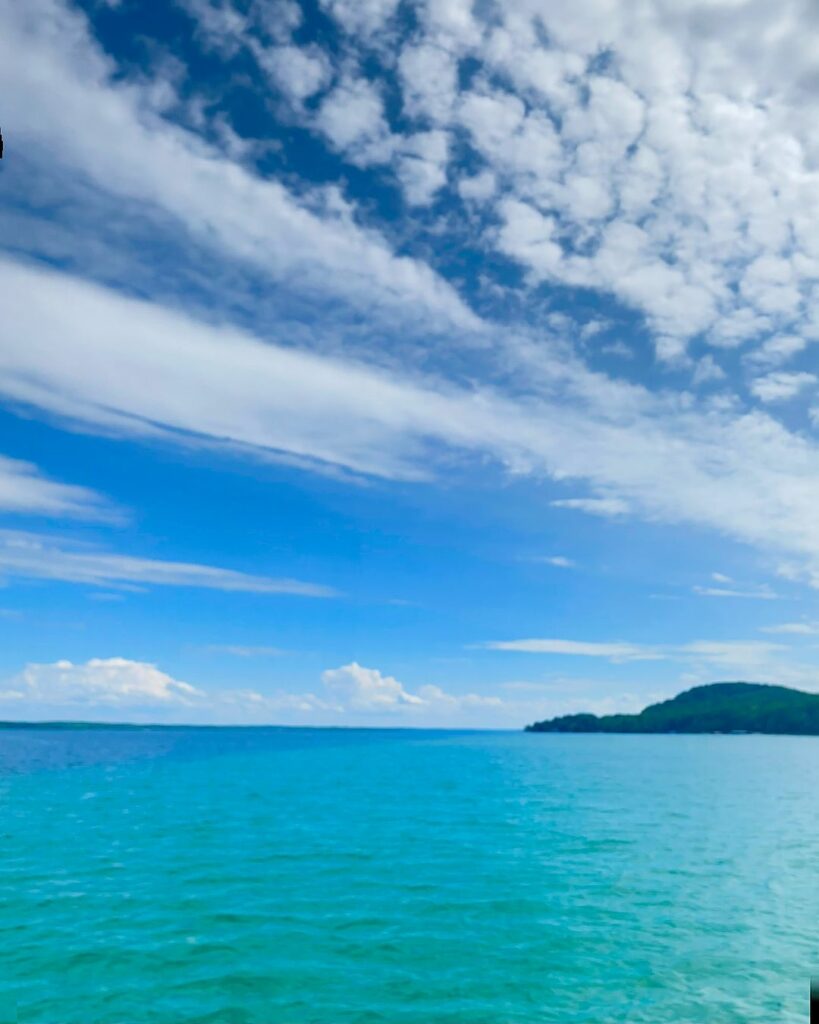
Torch Lake | Michigan
A hidden gem in Northern Michigan, Torch Lake is often likened to the famous turquoise waters of the Caribbean. Torch Lake is Michigan’s longest inland lake and a playground where visitors love everything from the sunsets to the sandbars.
With its easy location, Torch Lake is a paradise for boating, fishing, and swimming. The famous Torch Lake Sand Bar offers visitors a unique place to sunbathe, swim, boat, and bask on a perfect summer day.
Fun Fact: Torch Lake reaches nearly 350 feet at its deepest point.
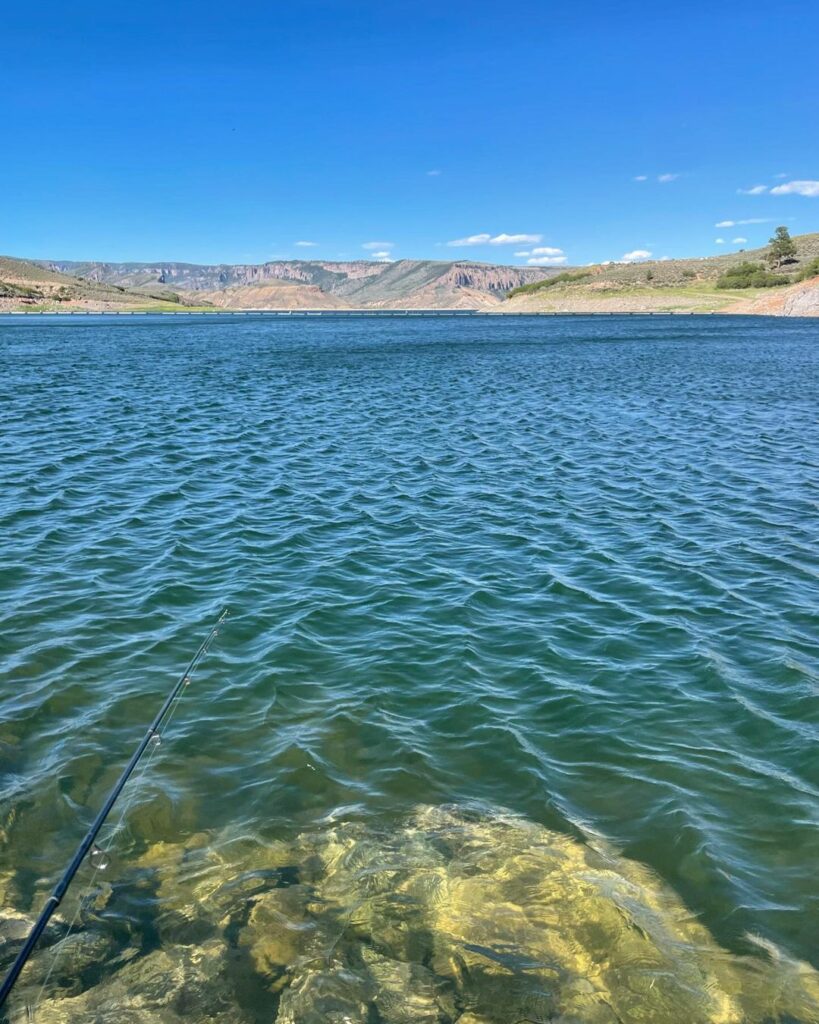
Blue Mesa Reservoir | Colorado
Flowing through the Curecanti National Recreation Area, the reservoir is Colorado’s largest body of water, spanning about 9,000 acres.
Outdoor enthusiasts will be in heaven as they explore stunning landscapes, fish for Kokanee salmon, and marvel at unique geological features in the surrounding Gunnison National Park. The West Elk Mountains to the north and the San Juan Mountains to the south create a dynamic landscape that has to be seen to be believed.
Fun Fact: Blue Mesa holds more than 900,000 acre-feet of water when its full.
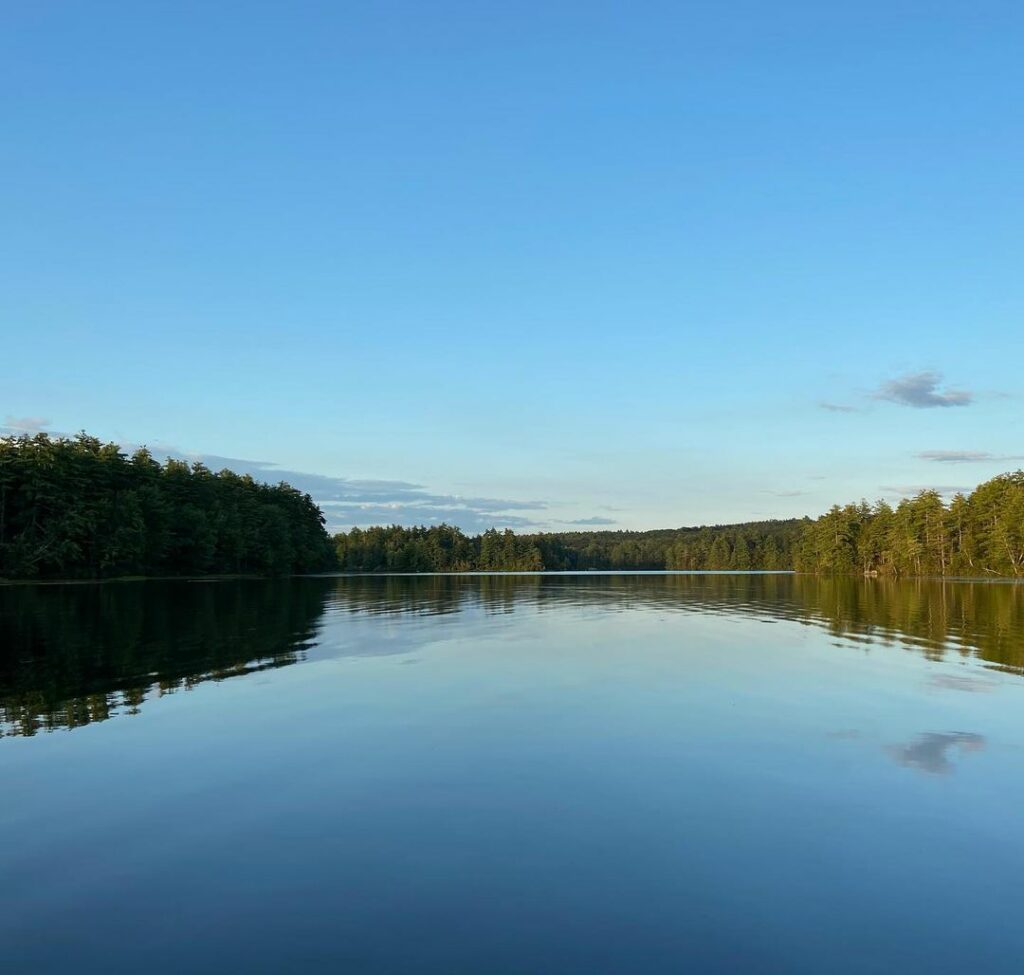
Pawtuckaway Lake | New Hampshire
Sitting 50 miles north of Boston in Pawtuckaway State Park, this lake has just over seven miles of shoreline and is 50 feet deep. But what the lake lacks in size, it makes up for in natural beauty.
The lake is a hidden gem, offering visitors the chance to enjoy unspoiled nature, kayaking, and spotting local wildlife in a peaceful setting. Hiking and nature trails in the park vary in length and are suitable for all travelers.
Fun Fact: The lake is a natural pond that was enlarged by the construction of four local dams.
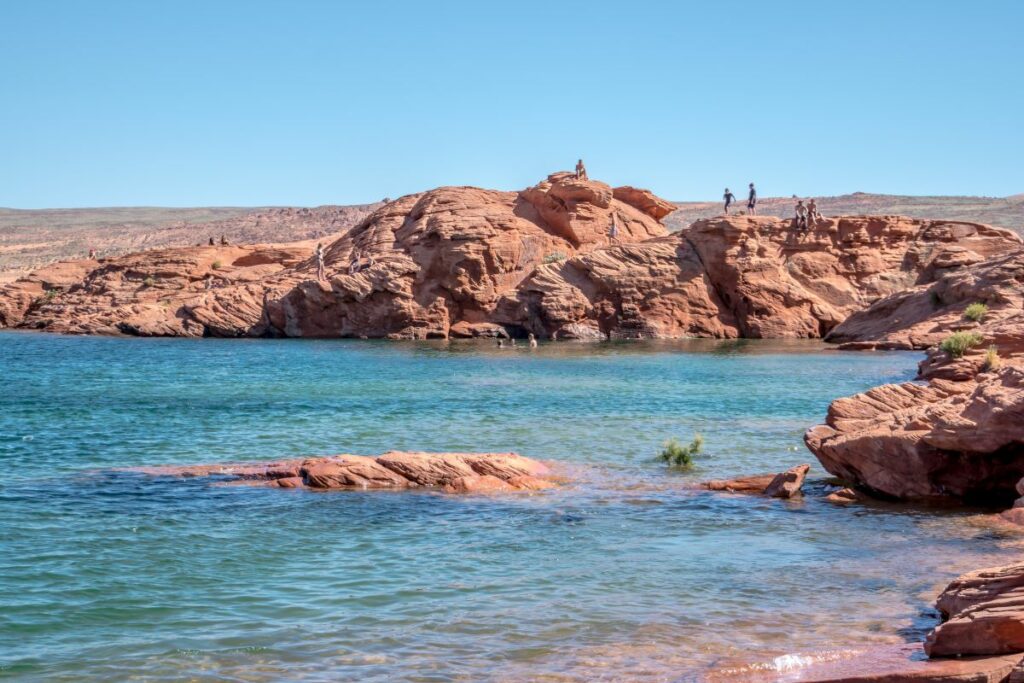
Sand Hollow Reservoir | Utah
A man-made lake formed after the construction of the Virgin River, the Sand Hollow Reservoir in Southwest Utah offers visitors a vibrant red sandstone landscape and clear blue waters.
Apart from the fantastic panoramic views, Sand Hollow is a popular spot for boating, fishing, and ATV riding in the surrounding dunes. This creates a fun way to enjoy the landscape and create unbelievable memories.
Fun Fact: The state park includes 15,000 of ready-to-ride sand dunes.
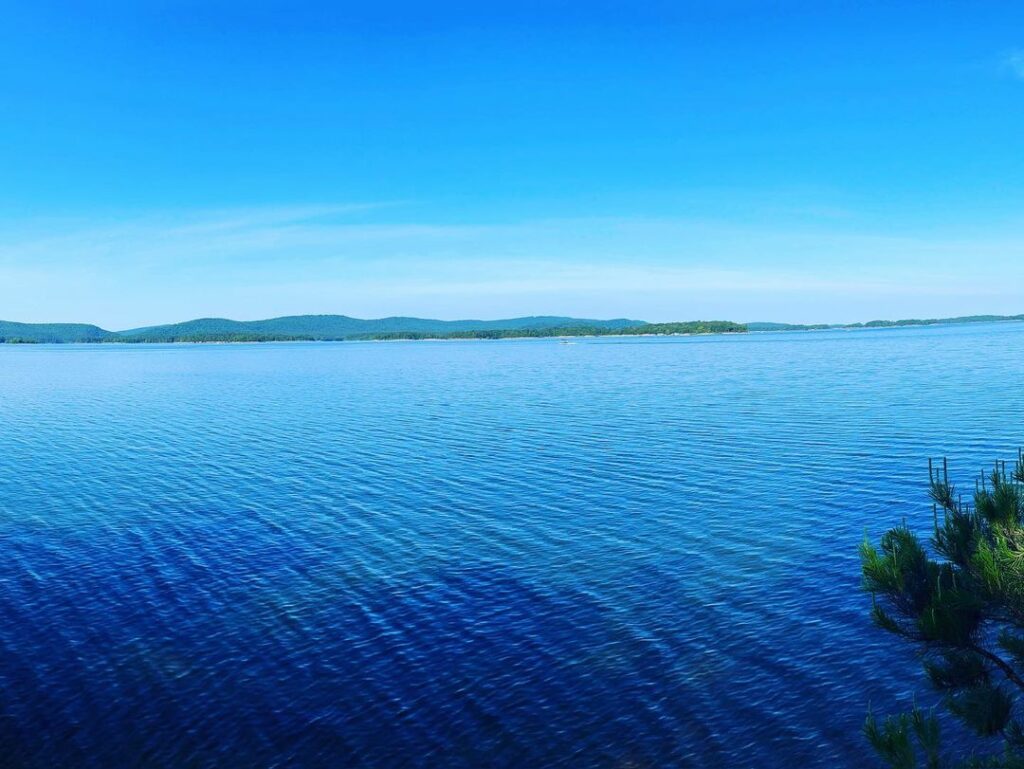
Lake Ouachita | Arkansas
Located within the Quachita Mountains, Lake Quachita is about 70 miles southwest of Little Rock and offers over 690 miles of shoreline as the largest lake in Arkansas.
The lake is a man-made reservoir located entirely within the state, captivating visitors of all ages with opportunities for outdoor fun and scenic, albeit irregular shoreline with rocky outcrops and wooded hillsides.
Fun Fact: Lake Quachita (pronounced Wash-ah-taw) gets its name from the French spelling of the Indian word “Washita,” which means “big hunt.”

Smith Lake | Alabama
Known for its deep, clear water and dramatic landscape in the Appalachian foothills, Smith Lake showcases the beauty of Northcentral Alabama with blue waters, rocky bluffs, and wooded hillsides.
This manmade reservoir created by the damming of part of the Black Warrior River is incredibly scenic, and renowned as a fishing hotspot and destination for birdwatching, camping, and hiking.
Fun Fact: Smith Lake is the deepest lake in Alabama.
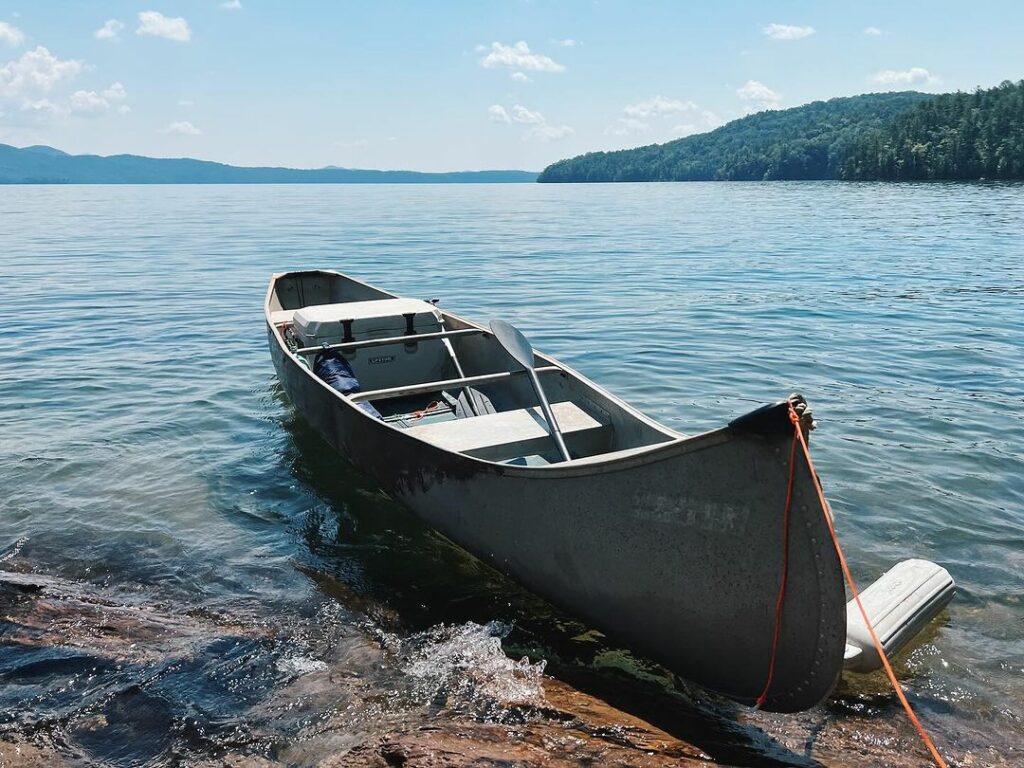
Lake Jocassee | South Carolina
Tucked away in the Appalachians, Lake Jocassee is known for its pristine water quality, scenic waterfalls accessible only by boat, and excellent scuba diving opportunities.
It is part of the Jocassee Gorges area, known for its rugged terrain, deep gorges, and pristine wilderness. The lake is a man-made reservoir with a maximum depth of around 300 feet and is dotted with coves, islands, and inlets, creating plenty of space for travelers to explore.
Fun Fact: Jocassee means “Place of the Lost One” in Cherokee.

Santeetlah Lake | North Carolina
Surrounded by the Nantahala National Forest in the southern Appalachian Mountains, Santeetlah Lake offers clear waters and serenity in western North Carolina.
The lake is a man-man reservoir, created by the damming of the Cheoah River, and reaches depths of more than 200 feet. With the Snowbird Mountains and the Cheoah Mountains surrounding it, it’s a picture-perfect place for relaxation.
Fun Fact: Santeetlah Lake’s name comes from an Indian word that means “blue waters.”
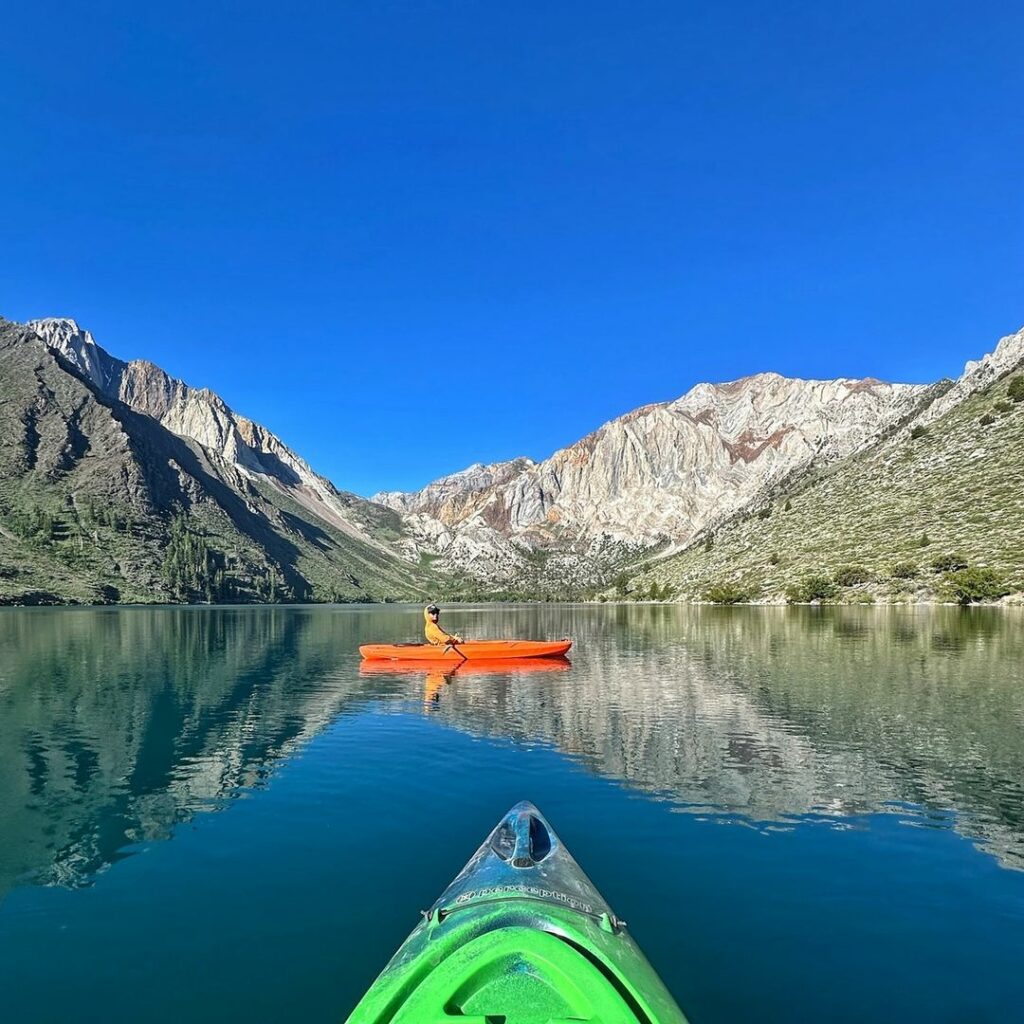
Convict Lake | California
Situated in the Eastern Sierras within Inyo National Forest, Convict Lake is known for its dramatic mountain backdrop, crystal-clear waters, and colorful history from which it gets its name.
Its name comes from a local accident in 1871 where convicts from a nearby prison camp engaged in a shootout with local lawmen, resulting in several deaths. Today, it remains a popular destination surrounded by the rugged mountain peaks of Mount Morrison, Mount Baldwin, and Laurel Mountain.
Fun Fact: Convict Lake’s deepest points are more than 120 feet deep, allowing water to remain cold and creating an ideal habitat for trout.
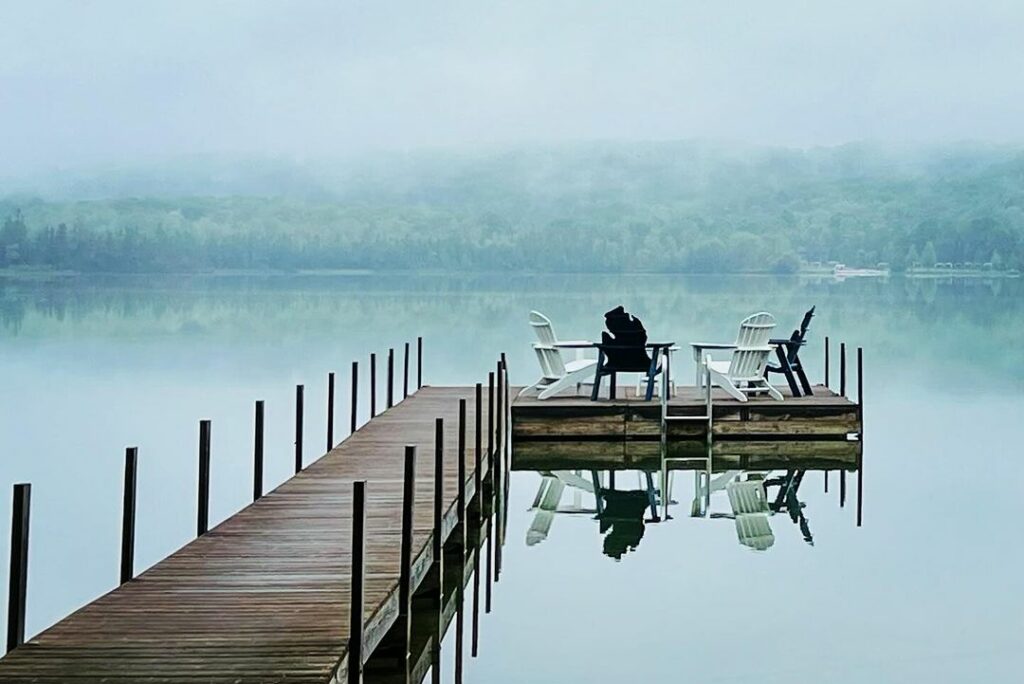
Walloon Lake | Michigan
This deep, spring-fed Northern Michigan lake, just north of Traverse City, is famed for its clear blue waters and for being the summer childhood home of Ernest Hemingway.
Beyond its history, Walloon Lake stands out for its unique shape — the southeast end looks like a boot — and as a clear, deep lake with a sandy bottom. Its wooded shores make it an ideal camping spot and it remains a popular angling destination.
Fun Fact: Among locals, the lake’s shape is known for its unique shape, including three arms, two shores, and its “foot,” where there’s a downtown village.
Explore the Most Beautiful Lakes in the U.S.
Each of these, the most beautiful lakes in the United States, offers a unique slice of American beauty, perfect for adventurers and relaxation seekers alike. Whether you’re drawn to the allure of high mountain lakes or the gentle charm of waters edged by forests and meadows, there’s a lake everyone can fall in love with.

